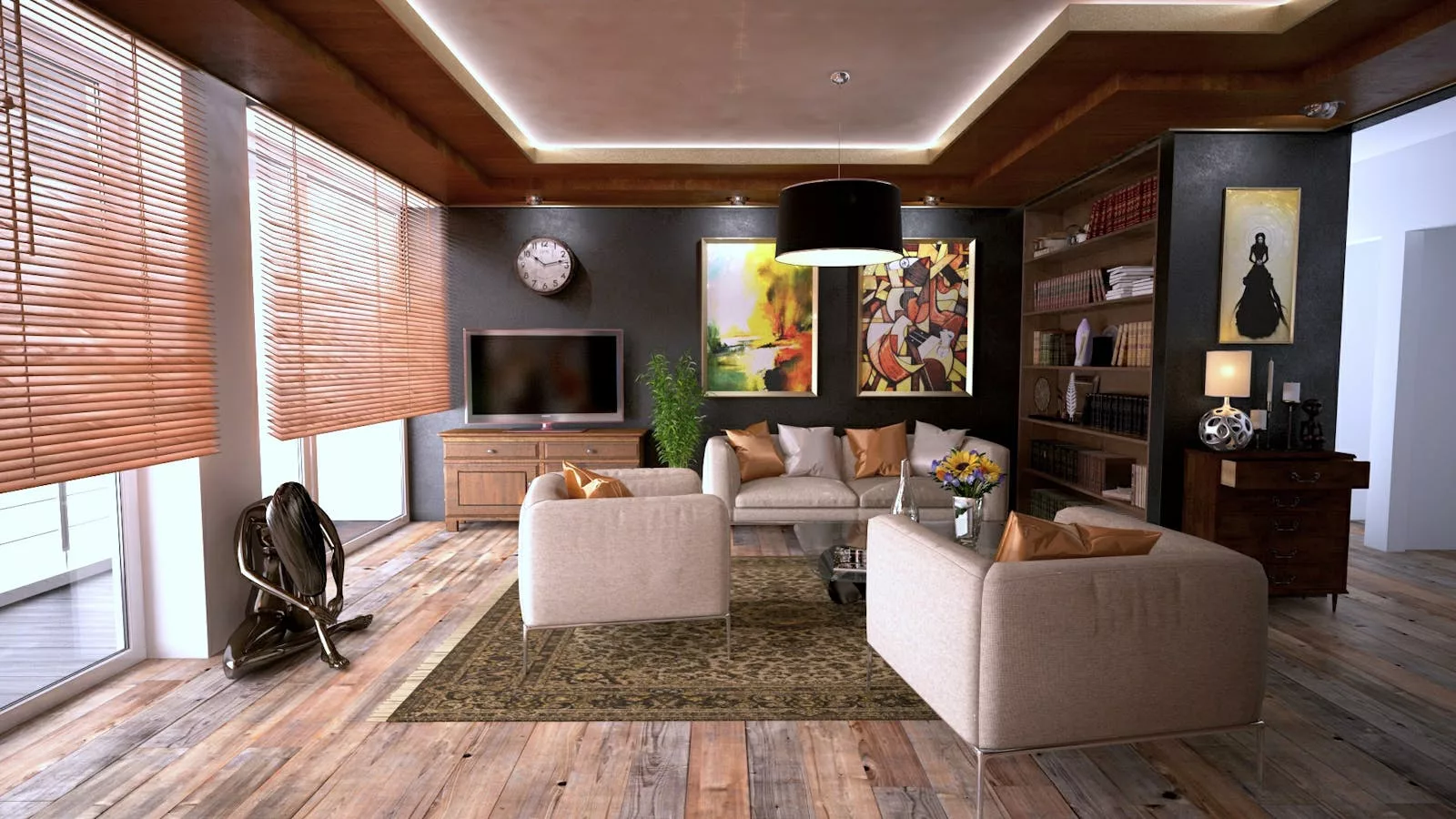Our home environment plays a crucial role in shaping our daily lives, influencing both our ability to focus and our capacity to unwind. A well-designed home strikes a balance between productivity and relaxation, creating spaces that enhance mental clarity, reduce stress, and foster overall well-being.
With remote work on the rise and an increasing emphasis on self-care, designing a home that supports both work efficiency and relaxation is more important than ever. By incorporating thoughtful design elements, optimizing lighting, decluttering spaces, and integrating calming aesthetics, you can transform your home into a sanctuary that enhances both focus and peace of mind. A home designed with intention fosters a seamless transition between tasks, ensuring that every room serves a purpose, whether it’s for deep work, creative inspiration, or unwinding after a long day. Furthermore, a well-planned home environment can encourage positive habits, boost mental well-being, and promote a greater sense of control over daily routines.
Creating a Dedicated Workspace
To maximize productivity, designate a specific area for work that is free from distractions. A home office or a quiet corner with a sturdy desk, ergonomic chair, and proper lighting can significantly improve efficiency. Choose a space with minimal noise and interruptions to maintain concentration and workflow. Separating work from leisure spaces helps establish clear boundaries, preventing work-related stress from seeping into relaxation areas.
Personalize your workspace with functional decor, such as organizational tools, a whiteboard, or inspiring artwork. Adding indoor plants can also boost creativity and reduce stress. Investing in high-quality office furniture ensures comfort during long hours of work, helping to maintain posture and overall well-being. Incorporating soundproofing elements, such as rugs, curtains, or noise-canceling headphones, can further enhance focus by minimizing background noise. Additionally, designing a workspace with flexible layouts allows for adaptability, ensuring that your environment remains dynamic and suited to evolving work needs. The inclusion of a standing desk or adjustable furniture can also improve comfort and encourage movement throughout the workday, reducing fatigue and increasing productivity.
Optimizing Natural and Artificial Lighting
Lighting has a profound impact on both productivity and relaxation. Natural light enhances mood and alertness, making it ideal for workspaces. Position desks near windows to take advantage of daylight and improve focus. If natural light is limited, opt for daylight-mimicking LED bulbs to reduce eye strain and maintain energy levels. Consider using adjustable blinds or sheer curtains to regulate brightness levels throughout the day, preventing glare while maintaining a well-lit environment.
For relaxation areas, softer, warm-toned lighting creates a calming ambiance. Incorporate dimmable lights, lamps, and candles to foster a cozy and tranquil atmosphere. Layering different light sources, such as ceiling lights, table lamps, and accent lighting, can add depth and warmth to a space, making it more inviting. Adjusting lighting to suit different times of the day can enhance both work performance and restfulness. Smart lighting systems that allow for programmable settings can further improve convenience, automatically adjusting brightness and color temperature based on the time of day and activity. Integrating LED strip lighting under furniture or along walls can add a modern touch while providing subtle ambient illumination.
Decluttering for Mental Clarity
A cluttered home can lead to mental overwhelm, reducing productivity and making it difficult to relax. Adopt a minimalist approach by keeping surfaces clear and storing only essential items within reach. Utilize storage solutions such as shelves, baskets, and cabinets to maintain an organized space. Implementing a decluttering routine helps keep living areas functional and visually appealing, reducing stress and promoting a sense of order.
Regular decluttering sessions help create a more harmonious home environment. By maintaining a clean and tidy space, you can reduce distractions, enhance focus, and promote a greater sense of calm. Consider using organization systems that categorize items based on frequency of use, ensuring that essentials remain accessible while rarely used items are stored away. Digital decluttering is also crucial—keeping virtual spaces organized, such as email inboxes and work files, contributes to a more streamlined workflow. Incorporating multi-functional furniture, such as storage ottomans or foldable desks, can help maximize space efficiency while maintaining an uncluttered look.
Designing Relaxation Zones
Creating designated relaxation spaces is essential for mental and emotional well-being. Whether it’s a cozy reading nook, a meditation corner, or a spa-like bathroom, having areas dedicated to unwinding can help reduce stress and improve overall mood. Thoughtfully designed relaxation spaces encourage mindfulness, making it easier to disconnect from daily pressures.
Incorporate soft textures, soothing colors, and comfortable seating in these spaces. Elements such as essential oil diffusers, calming music, and weighted blankets can further enhance relaxation, allowing you to fully disconnect from work and daily stressors. Using nature-inspired decor, such as wood, stone, or water features, can create a serene atmosphere that promotes a sense of tranquility. Additionally, integrating personal touches—such as favorite books, photographs, or sentimental objects—adds warmth and makes relaxation zones feel more inviting. Consider adding aromatherapy elements like lavender or eucalyptus to enhance relaxation and create a spa-like environment.
Incorporating Nature and Greenery
Bringing nature indoors has been shown to reduce stress, improve air quality, and boost overall happiness. Houseplants, natural wood finishes, and earthy color palettes create a grounding effect that enhances both productivity and relaxation. Greenery not only improves aesthetic appeal but also contributes to mental and physical well-being by filtering indoor air and increasing oxygen levels.
Consider placing plants in both work and relaxation areas to create a seamless connection between focus and tranquility. Low-maintenance plants such as snake plants, pothos, and succulents add beauty and health benefits to your home environment. Incorporating biophilic design elements, such as water features, stone textures, or nature-inspired wallpapers, can further reinforce a connection to the natural world. Outdoor spaces, such as balconies, patios, or gardens, should also be utilized as extensions of the home, providing areas for fresh air, movement, and relaxation. Expanding access to green spaces by adding vertical gardens or hanging planters can further enhance the benefits of incorporating nature into the home.
Enhancing Soundscapes for Productivity and Relaxation
Sound plays a crucial role in shaping our environment and influencing mood. While some individuals thrive in complete silence, others benefit from background noise to enhance concentration. White noise machines, calming instrumental music, or nature sounds can help improve focus and drown out distractions in workspaces.
For relaxation areas, consider using soundscapes that promote a sense of calm, such as gentle ocean waves, rustling leaves, or soft rain. Designing a home with proper acoustics—such as adding rugs, curtains, and upholstered furniture—can help absorb unwanted noise, making the space more serene and conducive to relaxation. Additionally, soundproofing materials, such as acoustic panels or foam tiles, can be integrated into home offices or entertainment areas to further enhance sound quality and minimize disturbances.
Conclusion
Designing a home that supports both productivity and relaxation requires thoughtful planning and intentional choices. By creating dedicated workspaces, optimizing lighting, decluttering, incorporating elements of nature, and enhancing the home’s sensory environment, you can cultivate a space that enhances focus and fosters tranquility.
A well-balanced home allows you to seamlessly transition between work and rest, leading to improved efficiency, reduced stress, and a greater sense of overall well-being. With a mindful approach to design, you can transform your living space into a place that nurtures both ambition and relaxation, ultimately creating an environment that enhances your quality of life. Investing in home design that prioritizes comfort, functionality, and well-being leads to long-term benefits that positively impact daily routines, mental health, and overall happiness.




